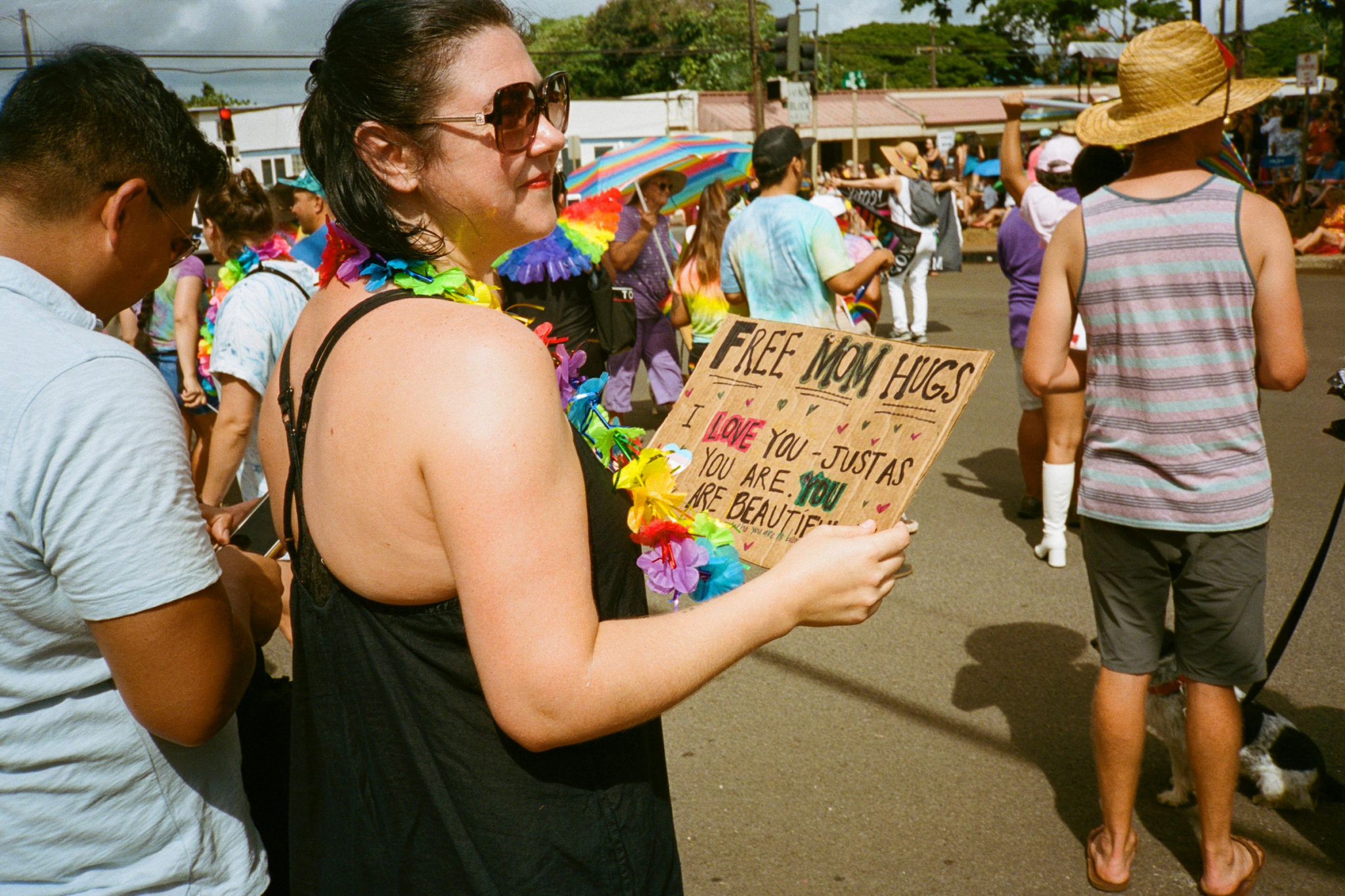In an exclusive interview, Colors of Kaua‘i filmmakers Mark Miller and Nick Longo reminisce on capturing LGBTQ history.
Text by Eunica Escalante and Marc Graser
Interview by Matthew Houck
Images courtesy of Mark Miller and Nick Longo
In 2019, Mark Miller and a friend took a trip to Kaua‘i. It began like any typical vacation: they saw the sights, ate good food, and basked in Kaua‘i’s rural beauty. But on their last day, their Airbnb host invited them up for breakfast. It was Steven Dick, an organizer of the 2019 Kaua‘i Pride Parade, the first in the island’s history.
Throughout the meal, Dick explained to the two vacationers the grassroots effort behind the event, how a dozen people came together to give Kaua‘i its first Pride.
Eventually, the pair left the island. But the story stayed with Miller, who was a filmmaker looking for his next project. Back in Los Angeles, he retold Dick’s story to another filmmaker friend, Nick Longo.
“And his gears started turning,” Miller recalled. “So we were like, let’s book our flights to Kaua‘i and go shoot this thing.”
A month later, the pair were on the Garden Isle, documenting 2019’s historic Pride Parade. The resulting short film was Colors of Kaua‘i, an account of Kaua‘i Pride that was wholly upbeat yet sincere, displaying how momentous of an occassion it was for the people of Kaua‘i and for the whole of the Aloha State.
Watch the full film below and on LEI TV.
Two years later, in anticipation of the 2021 Kaua‘i Pride Parade, Miller and Longo joined Matthew Houck, one of the organizers of the island’s first Pride and a featured subject in Colors of Kaua‘i. NMG Network’s Lei is a sponsor of the event.
Together, the trio reminisce on 2019 Kaua’i Pride and delve into Miller and Longo’s experience making the film. Their conversation has been edited for length and clarity.
I love that this project is still bringing light to people’s lives.
Nick Longo
MATTHEW HOUCK: Why did you decide to make a documentary about Kaua‘i Pride?
MARK MILLER: It wasn’t about Nick and I’s perspective. It was about the people who were living on the island. It can be said over and over again, but representation truly does matter. And the more we see the queer community being represented on screen or in text, the better the world is going to be.
Growing up in a small town where, I didn’t know what a Pride Parade was until college, and maybe that’s on me, but there just wasn’t any representation of diversity in the town I grew up.
I just feel like if there was, I think my youth would have been a lot smoother and I think I would’ve been able to love myself a lot sooner. And I think that being a storyteller, that’s kind of what we want to do is capture stories. So connecting with Bianka, and you, Matt, and the rest of the ensemble of the film was so important.
NICK LONGO: It just made so much sense. The timing of it was just too good. And it was perfect. We really did want to like flip the camera. We were like guests in this beautiful thing that was happening.
We kind of wanted to go there and learn as much as we could about Kaua‘i: the people that lived there, the queer history there, and what’s happening now, which was this beautiful parade. And so many people coming together to make it happen.
Representation truly does matter. The more we see the queer community being represented on screen or in text, the better the world is going to be.
Mark Miller
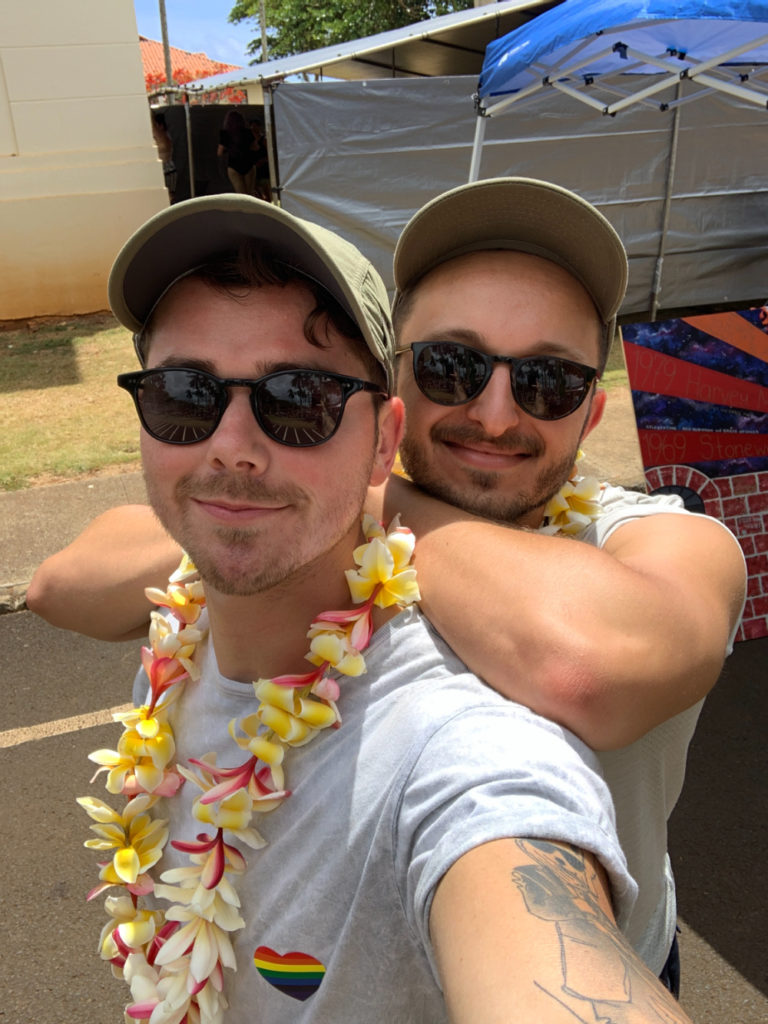
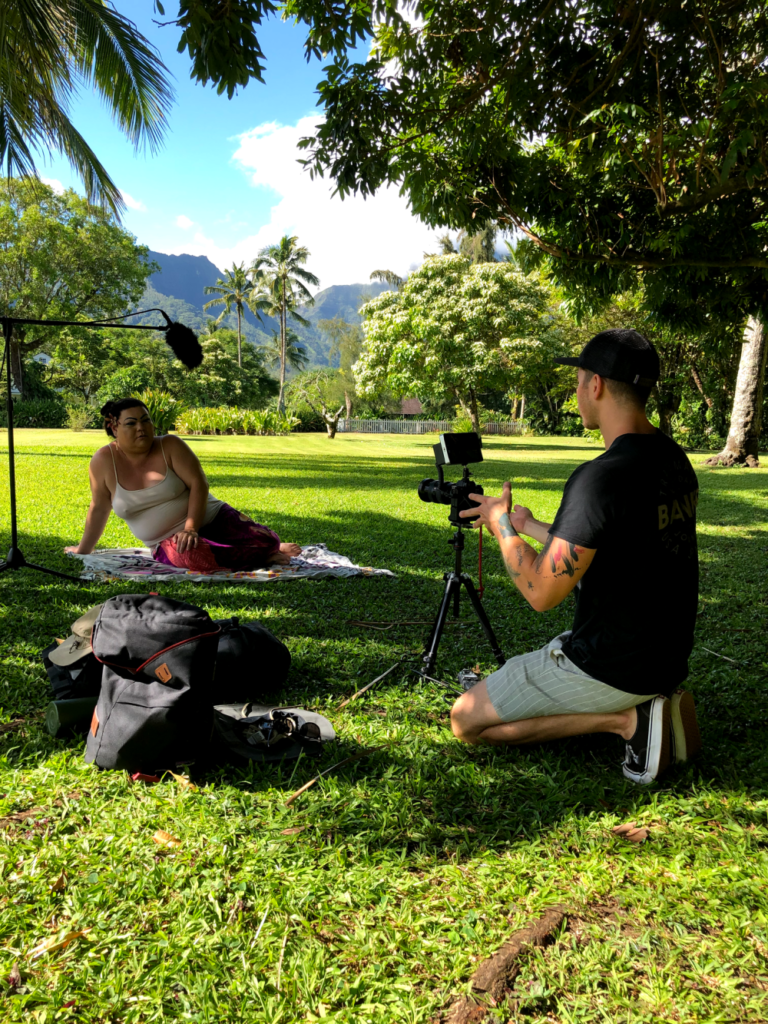
HOUCK: Can I ask, what was your first Pride experience? Mark, does your small town have a Pride now?
MILLER: My small town does have Pride now (laughs). But my first Pride experience was actually in San Francisco.
LONGO: That was mine too!
MILLER: The gay mecca (laughs). I think I still struggle with this today but I feel like I’m really gay on the inside, but not really gay on the outside, if that makes any sense, so going to Pride Parades is extremely healthy for someone like me who just kind of walks around like a little bit of a shell of a queer man. I just feel right at home when I’m at Pride Parades.
LONGO: Yeah, My first one was San Francisco Pride also. And, of course, it was huge and crazy and fun. I think it’s important. And I’m glad you said that about kind of finding your place in the community, Mark.
I think it’s like when I came out in my head, I was like, oh, now I’m gay. But then I kind of realized, oh, wait, I still have to find myself. And I still have to become the person that I was meant to be. And it’s whatever form that is. It’s whoever you want it to be.
I’m not just Nick, who’s gay, I’m Nick and a bunch of other things too. So it still takes time to find those parts of yourself, even in the community that you’re starting to identify with. And, I think that is something that we learn day-to-day hopefully more and more. And as we keep going to more and more Prides.
HOUCK: I think it’s just really important for visibility and representation. Our goal with the Kaua’i Pride Parade was to show young people that, you know, they need to see themselves reflected in their community. I don’t know if you know that Kaua’i has a pretty high suicide rate, especially of youth, and more so for LGBTQ youth. And a lot of people that grew up here leave to feel accepted.
I mean, you might be able to relate in small towns feeling this need to go find your community because there’s not like a mecca of it where I grew up. So a lot of people will go to Honolulu or go to Las Vegas or elsewhere to like feel at home and accepted. Part of our goal is to try to change that. We don’t have to become a hub or whatever, but we want to show people that this community is here. And especially for the people that grow up here, you don’t have to leave your home to to be who you are. There’s a lot of acceptance here.
We want to show people that this community is here. And especially for the people that grow up here, you don’t have to leave your home to be who you are. There’s a lot of acceptance here.
Matthew Houck
LONGO: I can just imagine what a difference that can make, being, you know, a little kid growing up in a remote — not just the remote town, but a remote island. It’s literally in the middle of the ocean; that can feel isolating, alone. But being able to see your community there, imagine the difference that can make for those little kids.
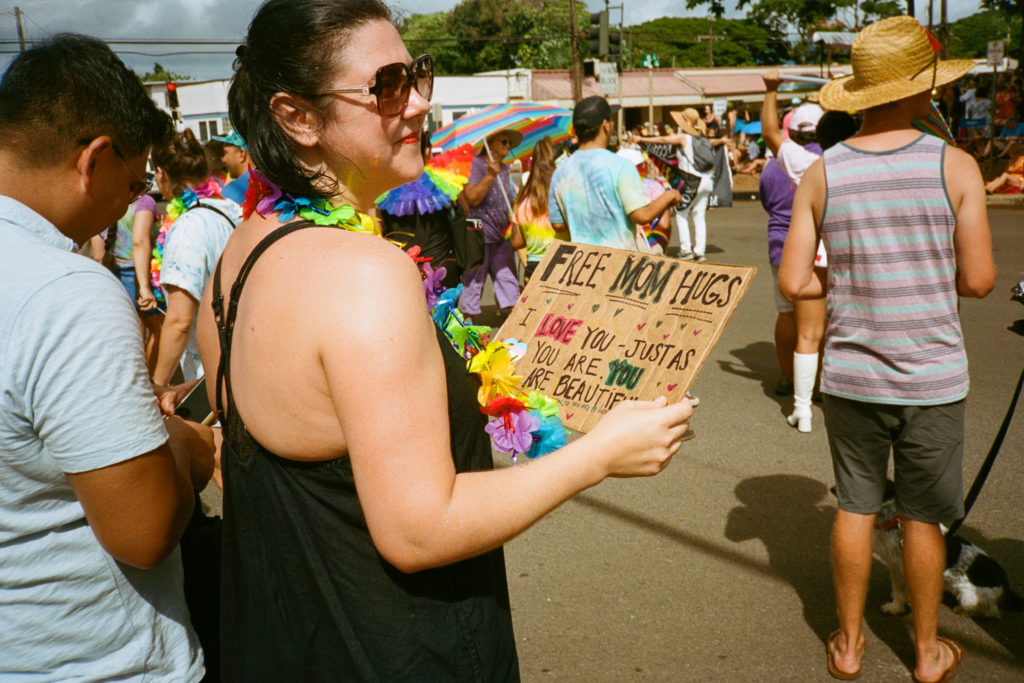
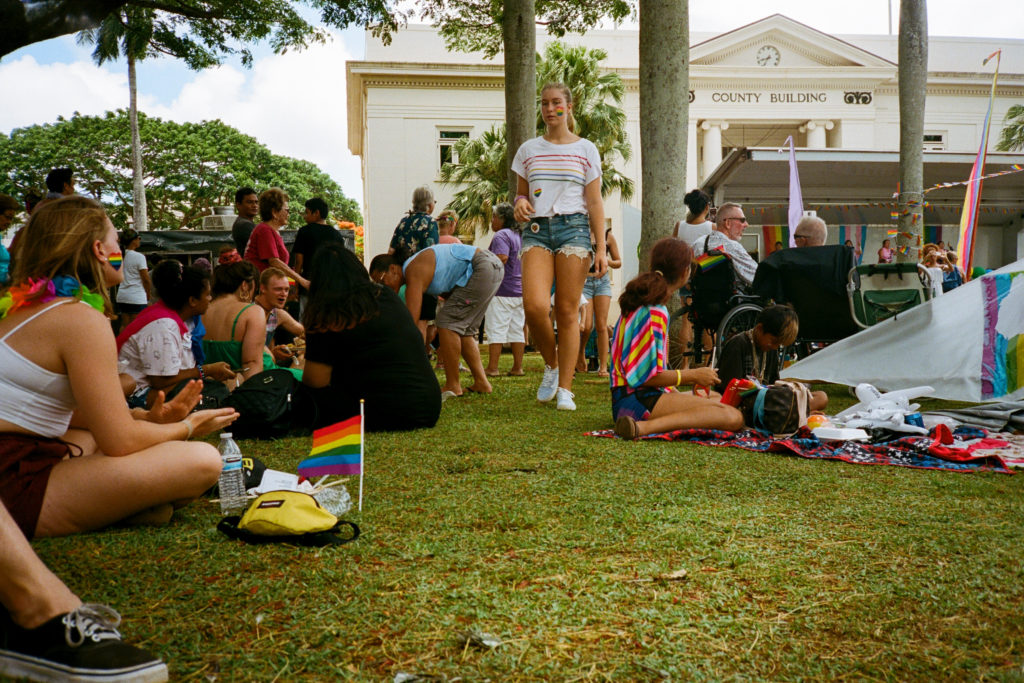

HOUCK: And now the message isn’t just connecting with the people here, thanks to you. This message is connecting with so many people all around the world. And like, I can’t tell you the impact that it’s had on myself and so many people here what you’ve done with your storytelling
How would you compare Kaua’i Pride and its inaugural experience to other Prides you’ve been to? Did you see like more young people at this? What were the differences or some of the comparisons you saw?
LONGO: I think it definitely felt like a more intimate experience. There were more families it seemed. I think with some of the people we spoke with more people had never really been to a Pride, but were there to support someone that they loved.
In a place like San Francisco or New York City, Prides can seem so overwhelmingly huge, which is totally awesome to have that kind of big visibility. But it can also be more like a party. There are people there for all sorts of different reasons.
In Kaua’i, there was a lot of heart, there was a lot of soul, and a lot of people that were so excited that this was finally happening and that they could provide that support for themselves if they were LGBTQ or someone that they really loved and wanted to support.
MILLER: I think it just felt super monumental and that it was a long time coming. It needed to happen for a while now. And it did. And I think the energy … it’s like giving me chills right now. It’s just I had never felt like that — like ever, honestly. It was a magical day.
HOUCK: When you took this project on, you probably didn’t know the impact you would ultimately have from the film that you created. What did you hope your message would be, or that viewers would take away from your story?
LONGO: I think the goal of this is just a message of love. You know, it’s a short and sweet little film that will hopefully bring some joy to people. I think I’d like for people to have the freedom to be whoever you want to be and to find your place in this community or in any community and just to feel a sense of love, the sense of the ability to be able to live life, how you want and be able to blend in or stand out if you want. We want people to experience all the love that’s in Kaua’i, the love that we felt going there, meeting these people and interviewing them and sharing this beautiful experience that happened.
MILLER: I think what’s so cool about a documentary format versus something fictional is that you can see in the eyes of these people that we spoke to, that they’re living their truth. When we spoke to Manu and Violet, I think seeing a healthy same-sex partnership on screen is just something we need to see more of.
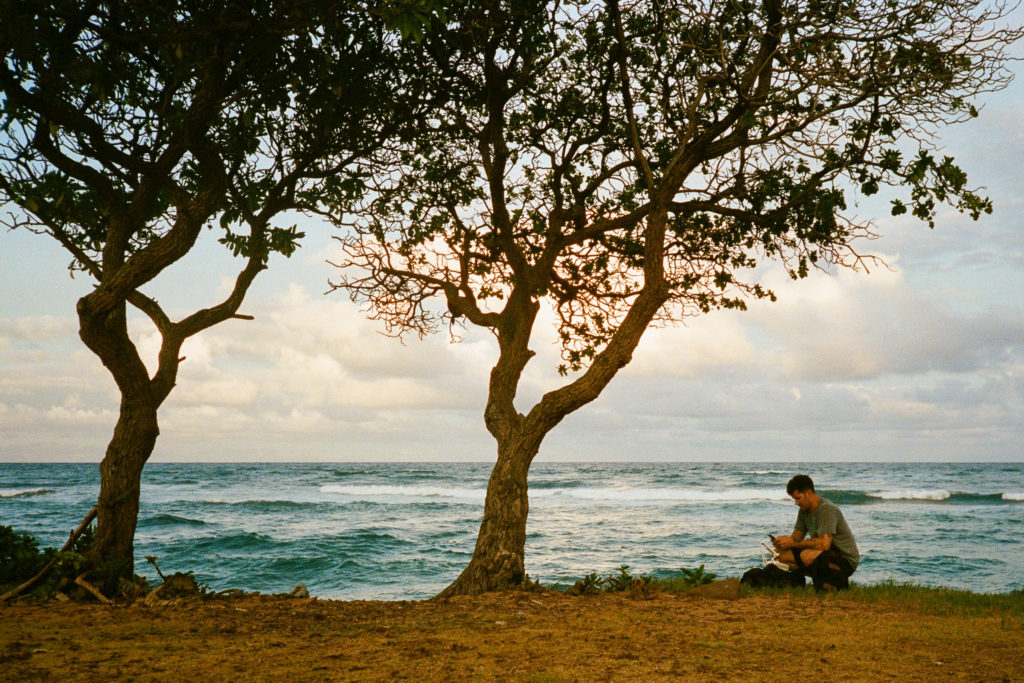
HOUCK: How has Colors of Kaua’i impacted you? what has it been like since you’ve gotten all of this recognition?
MILLER: It informed me as a filmmaker. We were young filmmakers, you know. This was like my fifth or sixth film. Nick wrote, directed, shot, produced, edited his own feature film a couple of years ago. And when we shot this film, we knew each other for maybe what, five months?
LONGO: Like, short of Googling, ‘How to make a documentary,’ we were like, what do we do? What do we need to bring? How many interviews do we need? How long should it be? What’s it about, you know? It was like, ‘Let’s make something, but let’s just make it,’ which was the main thing. Just do it. We just had to do it.
MILLER: Like Nick said, anybody can shoot a little film, but it’s really about the subject. Story is king and you guys had a beautiful story to tell. So thanks for allowing us to, uh, to come there and do that.
HOUCK: What’s next for you?
MILLER: I’m working on more little documentaries. I call them human interest pieces because I love the phrase empathy through perspective. As a queer filmmaker I think I’m just trying to pump out more love, positivity, acceptance in the world because I feel like I, the reason I started my YouTube channel in 2012 was the fact that I came out of the closet. My family and friends were extremely supportive of me. I saw the privilege that I had and the advantage that my life is going to have just based off of those facts. And I thought if I could shoot my own coming out story and it reached one or two people that it may bring a little bit of light to the world.
The greatest thing we can do, I think for the youth and the young people and the world, is just be our authentic selves. Meeting everyone on the island that few weeks, you guys weren’t putting up a front for anybody. It was like, you are authentically you.
And it was I think the reason I get so emotional talking about it because living in a big city like LA, where everyone is obsessed with image and impressing the next person, like there was none of that to be seen on the island. I just wanted to like sell all my possessions and just like move into, uh, a cardboard box somewhere on the beach.
The greatest thing we can do, I think for the youth and the young people and the world, is just be our authentic selves.
Mark Miller
HOUCK: It doesn’t have to be a cardboard box. You’re welcome here (laughs).
LONGO: I’ve been writing more, working on some documentary things, but really just finding ways to connect with this community that always is there for me and gives back in so many ways.
I’m spending more time back at home, being close to my family, and just finding ways that I can connect with my community — learning more about myself, finding ways that I fit in, ways that I can help bring light to it.
I love that this project is still bringing light to people’s lives.

